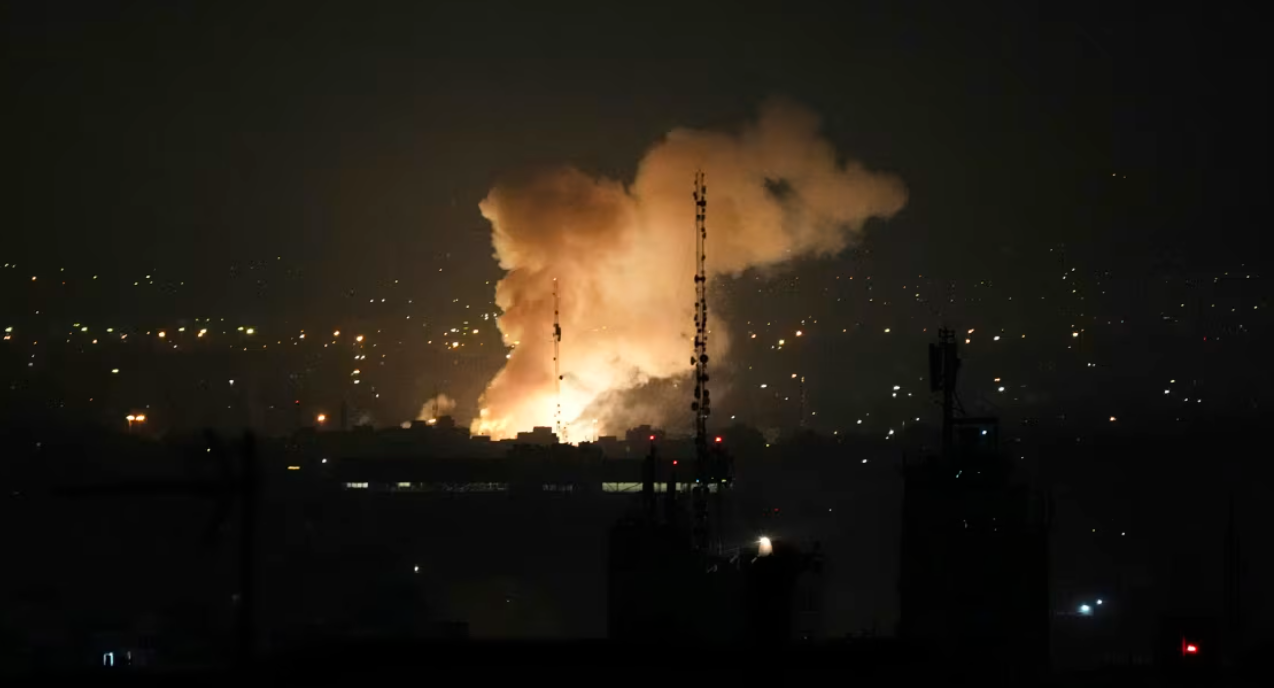Israel’s unprecedented attack on Iran raises the specter of sharply higher gasoline prices, just as the summer driving season heats up.
Until recently, gas prices remained low and stable. Affordable fuel helped reduce inflation and eased consumer worries about soaring tariffs.
Typically, gas prices increase modestly during summer as vacation travel rises. But everything shifted following Israel’s surprise strikes on Iran — an attack Tehran has promised to retaliate against. Experts say how severe Iran’s response is, and whether it disrupts oil exports from the Middle East, will influence how much gasoline prices rise.
Oil prices jumped immediately as markets prepared for a wider conflict that threatens vital energy supplies in the region. US crude surged as much as 14% overnight before easing.
By midday Friday, crude was up 6%, marking its largest single-day gain since April 2023. For the week, oil surged roughly 12%, the biggest weekly rise since October 2022, when OPEC made deep production cuts.
Patrick De Haan, vice president of petroleum analysis at fuel tracking platform GasBuddy, said, “We’re still at the early stages, but Iran calling the strikes a declaration of war doesn’t bode well for oil flows.”
He added that gasoline prices are expected to rise in the next few weeks by about 10 to 25 cents per gallon. On Friday, the national average for regular gas was $3.13 per gallon — down from $3.16 last month and well below last year’s $3.46.
Gas prices will likely climb significantly in the coming days due to higher crude costs.
“I expect gas prices to increase, but not to record highs,” De Haan said. “The risk is that tensions in the Middle East escalate beyond borders. Will the violence spread? Will oil flow be affected?”
Russia’s invasion of Ukraine sent oil and gas prices soaring in early 2022, pushing gas prices to a record $5.02 per gallon.
Fortunately, energy prices are entering this crisis at relatively low levels.
Fears of a supply shock
There is still considerable uncertainty about how high gasoline and oil prices will go because Iran’s response is unclear.
Analysts warn that if Iran escalates dramatically by attacking regional energy infrastructure or US forces, prices could surge much higher.
Helima Croft, head of global commodity strategy at RBC Capital Markets, wrote in a client note that “oil has already spiked… its final level will likely depend on whether Iran repeats its 2019 tactics, targeting tankers, pipelines, and key energy sites in the region.”
A major concern is that Iran might target the Strait of Hormuz, a narrow waterway connecting the Persian Gulf to global oceans, and the world’s most important oil chokepoint. Iran has threatened to do so in the past.
Jorge León, head of geopolitical analysis at Rystad Energy, noted in a report that “if Iran disrupts flows through the Strait of Hormuz, it could cause a major supply shock with a sharp spike in oil prices.”
About 21 million barrels of oil pass through the Strait of Hormuz each day, roughly one-fifth of global daily consumption, according to the US Energy Information Administration.
However, Rystad Energy said if Iran’s response is more limited — focusing only on Israeli military targets — market reactions may remain “contained and temporary,” limiting gasoline price increases.
A return of $100 oil?
Any disruption to shipping in the Strait of Hormuz would face opposition from the US Navy, which is stationed nearby partly to deter such threats.
Croft, a former CIA analyst, said it would be “extremely difficult for Iran to close the strait for an extended period given the US Fifth Fleet’s presence in Bahrain.”
Still, Iran could attack tankers and mine the waterway to disrupt traffic.
Goldman Sachs estimates that oil prices could soar past $100 a barrel if the Strait of Hormuz faces an “extended disruption,” as such an event could prevent core OPEC producers like Saudi Arabia and the UAE from increasing output.
However, Goldman Sachs considers a disruption to the Strait “much less likely” and recently only slightly raised its summer oil price forecast.
“We still assume no disruptions to oil supply in the Middle East,” wrote Daan Struyven, co-lead of the bank’s commodity research team, in a client report.
How will OPEC respond?
If oil prices keep rising, steps might be taken to boost supply.
One option is that Saudi Arabia and other OPEC members could speed up recent production increases initiated earlier this year.
RBC’s Croft said, “If oil gets caught in the crossfire, we expect President Trump to request OPEC spare barrels to help control prices and protect US consumers from the economic fallout of Middle East tensions.”
Goldman Sachs predicts that if Iranian oil exports fall by 1.76 million barrels per day during the conflict, core OPEC+ production would cover half of the shortfall. In that case, Brent crude could surpass $90 a barrel before falling back to $60-$70 next year.
Emergency oil stockpiles
Another option is that the US and other major oil consumers could release emergency reserves, as they did in 2022. Former President Joe Biden tapped the Strategic Petroleum Reserve (SPR) aggressively to help prevent gas prices from climbing too high after Russia’s invasion of Ukraine.
“We’re ready to act if needed,” said Fatih Birol, executive director of the International Energy Agency (IEA), in a recent statement.
The IEA, which coordinates oil reserve usage among member states, is closely monitoring the situation. The group has over 1.2 billion barrels of emergency oil stockpiles.
OPEC pushed back strongly against these comments. On social media, OPEC’s secretary general said the IEA’s remarks “raise false alarms and create unnecessary market fear by suggesting the need to use emergency oil stocks.”
Still, releasing emergency reserves remains an option that President Trump could consider to cool energy prices if Middle East tensions escalate.














